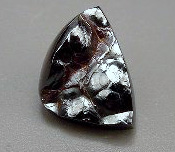
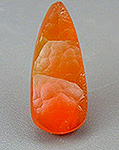
When certain minerals occur in aggregates of tiny crystals rather than single large ones, one of the habits they can adopt is named "botryoidal". The word is derived from the Greek word for grapes, and means tiny crystals occurring in closely interlocking spherical masses or "bubbles" which can sometimes look like bunches of grapes. Those in which the masses tend to be less distinct and grade into one another are termed "sub-botryoidal".


Several species and varieties commonly occur as botryoidal gems, in particular some types of chalcedony, Smithsonite, malachite, and azurite. At least one variety of chalcedony, fire agate, is defined by this property--> being a botryoidal growth of platy crystals of limonite over layers of chalcedony. Fire agate is the most valuable of the botryoidal gems and has been treated separately in another essay.

Botryoidal gems are fashioned into cabochons, carvings or ornamental objects and can be very interesting and lovely. There's a wide variation in appearance, based on whether the bubbles are large or small, uniform or different sizes, if the botryoidal surface is confined to recesses or not, and whether or not the surface is covered with drusy crystals. Furthermore, the lapidary can treat the material in various ways: sometimes the botryoidal surface is left in its natural state, sometimes it is polished and occasionally some or all the the bubbles are flattened to reveal the inner layering.
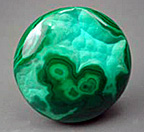
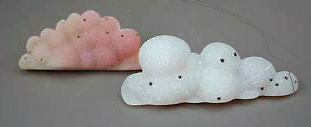
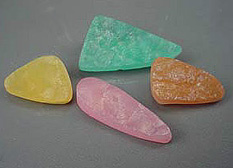
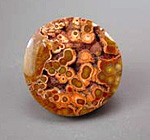

Botryoidal gems make an interesting sub-collecting area within the gem hobby, and they can be used in beautiful and distinctive jewelry pieces as well.
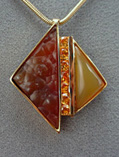
Rarity and beauty would be the major value determiners in this group of gems. Malachite which commonly takes this form and is widely available is less valuable, say, than Smithsonite, which is a much rarer material, or than botryoidal prehnite which comprises only a tiny fraction of all prehnite. The beauty of the material itself, how intense or unique the display of bubbles and the artistry of fashioning are all important factors in determining value of a specific piece.